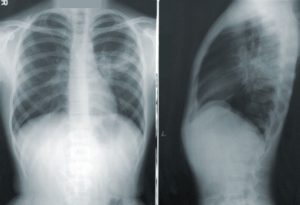Last week, we shared about hiatal hernias. Let’s dive deeper and share more on this topic. There is so much information on hiatal hernias, so it can be overwhelming but speaking with an experienced Orlando gastroenterologist will help ease your worries on the matter.
When to visit a doctor or the Emergency room:
Readers learned that a hiatal hernia occurs when the upper section of the stomach pushes through the opening in the diaphragm. The diaphragm is a thin muscle wall that separates the chest cavity from the abdomen.
In the last blog, we mentioned what GERD symptoms may look or feel like. Although there seems to be a link between hiatal hernias and GERD, one condition does not necessarily cause the other. Many people have this type of hernia without having GERD.
Others have GERD, but do not have a hiatal hernia. Also, chest pain is a symptom of a hiatal hernia. Because chest pain is also a symptom of a heart attack, it is very important to contact your healthcare provider if you experience this symptom.
It can be the difference between life and death, so do not put it off. Better yet, go to the emergency room if you have chest pain. It is better to be safe than sorry.
Diagnosing a hiatal hernia:
Several tests can be done to diagnose a hiatal hernia accurately. The following tests may help your doctor may a diagnosis:
- barium swallow test
- endoscopy procedure
- esophageal manometric studies
- pH test
- gastric emptying studies
Tests used to diagnose a hiatal hernia:
 What exactly is a barium swallow test? This test involves drinking a special liquid. Then, an x-ray is used to help see problems in the esophagus. This will show swallowing disorders and other conditions.
What exactly is a barium swallow test? This test involves drinking a special liquid. Then, an x-ray is used to help see problems in the esophagus. This will show swallowing disorders and other conditions.
The x-ray will also show the stomach area. This will help with showing ulcers or tumors in the stomach. The barium swallow test also shows how big the hiatal hernia is.
During the test, the x-ray will show if the stomach is twisted as a result of the hiatal hernia. Next up, the gastro doctor will use an endoscopy. This procedure is used often when diagnosing digestive health issues.
Endoscopy procedure and more:
An endoscopy is a common procedure. It shows the inside of the upper digestive system. We have shared information on endoscopies before due to its commonality.
During this procedure, a long, thin, and flexible instrument will be placed down the patients throat. The patient will most likely not feel any pain, but may have a sore throat afterwards. An esophageal manometry may be up next.
 An esophageal manometry measures the strength and muscle coordination of the esophagus when the patient swallows. As you can imagine, this is very helpful. If the patient does not have sufficient strength, it can cause a whole list of further, related issues.
An esophageal manometry measures the strength and muscle coordination of the esophagus when the patient swallows. As you can imagine, this is very helpful. If the patient does not have sufficient strength, it can cause a whole list of further, related issues.
A pH test is another option when diagnosing a hiatal hernia. It measures the acid levels in the esophagus. This helps to determine which symptoms are related to acid in the esophagus.
Lastly, gastric emptying studies may hep examine how fast food leaves the stomach. The results from this test are particularly important in patients experiencing nausea and vomiting. This test is used because there may be other causes of the nausea and vomiting symptoms besides a hiatal hernia.
Come back next time as we share management and treatment options for a hiatal hernia. It is extremely important you do not ever assume chest pain is okay. Chest pain requires immediate examination.
Discuss what your treatment options may be with our phenomenal Orlando gastroenterologists. Seek treatment, so you can feel and look your best for upcoming holidays!
Staff Writer
